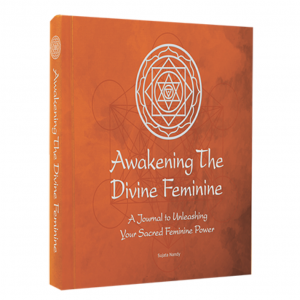The fifth (panchamam) form of Durga, and one of the nine forms of the Navdurgas, Skandamata is worshipped on day 5 of Navarathri.
Prayers of Goddess Skandamata is performed the same way as other forms of Goddess Durga. Apart from other usual rituals, it is believed that if women worship Goddess Skandamata by offering red flowers, Shringar Samagri, (decorative ornaments), they will be blessed with a happy long-married life and children. The seventh chapter of Durga Saptashati (or the Chandipath), is also recited and chanted on this day.
WHO IS GODDESS SKANDAMATA?
Goddess Parvati was given the name Skandamata, after She gave birth to Lord Skanda also known as Kartikeya (or Murugan). The goddess is three-eyed, four-armed, and rides on a lion. While in one hand She is holding Her child, Her other hand is seen in the fear-dispelling Abhayamudra position. She is seen holding lotus flowers in the remaining two hands. The light-complexioned goddess sits on a lotus flower and is also referred to as Padamasani.
It is believed that Goddess Skandamata blesses Her devotees with salvation, prosperity and power and is known as the Goddess of Fire, symbolizing love and motherhood. When a devotee worships Her, Lord Skanda, who is on Her lap, is automatically worshipped. Thus, the worshipper enjoys the grace of Skandamata and also the grace of lord Skanda.
Bananas are offered to this Devi with the chanting of mantras, which are then distributed to Brahmins. Fruits, sweets, flowers, rice, and water are offered during Her worship. Red-coloured flowers are Her favourite and red roses being the most auspicious offering.
WHO IS LORD SKANDA?
Lord Skanda was born out of the “Yog Agni,” of Lord Shiva and Goddess Parvati. He is the army-in-chief of the army of Gods.
He is the protector, and bestower of health and strength. His incarnation was needed to kill the demons who were over powering the Gods, and there was no one who could kill those demons.
“Murugan,” is an ever-youthful god; He is very powerful, He has a peacock, a pea-hen and a snake with Him, and He carries a Javelin in His hands. He is ever youthful, because He has mastered the “Panchbhootas.” He is the one who symbolises a “true yogi.”
Today we worship the mother of the mighty, victorious, protector “Skanda.”
Goddess Skandamata is the Goddess of the Vissudha (Throat) Chakra, where She aids us in speaking our truth and having the power to be heard.
WHAT IS THE THROAT CHAKRA?
The fifth chakra, Vishuddha Chakra, is located at the base of the throat, at the center of the Larynx. The energy element governed by this chakra is effective communication. It also represents inspiration and expression.
Vishuddha Chakra establishes a strong connection to both verbal and body language.
The Sanskrit word ‘vishuddha,’ means purifying the body from harmful substances. The Throat Chakra restores the energy by detoxifying the impurities from the body and mind. Unhealthy food and polluted air block the Throat Chakra. An active Vishuddhi Chakra contributes to the preservation of health.
The Throat Chakra is associated with the color bright blue. Blue energy is pure, soothing, calming, and healing and connects a person with the divine. The element of space defines the Throat Chakra. Emotions can only expand when there are space and freedom.
The Physical Body: The throat chakra is situated in the centre of the neck at the height of the thyroid gland which regulates processing of energy in the body through temperature, growth and metabolism. It is also linked to the mouth, jaws, tongue, pharynx, palate, shoulders and neck.
The Emotional Body: The throat chakra is related to the expression of yourself through truth, purpose, creativity and individuality. This chakra is connected to the second chakra or sacral chakra, which is another centre of emotions and creativity. The throat chakra’s focus is on expressing ideas clearly, gracefully and honestly, and projecting one’s authentic creativity into the world.
The Mental Body: When Vishuddha is in balance, you can communicate clearly and ask for what you need, in order to manifest the world in which you wish to live. You know and honour yourself. You can accept things as they are and maintain equilibrium within myself and the world around you.
The throat chakra has a masculine energy and is symbolized by a blue 16-petaled flower. Elementally, it is associated with sound, and its mantra is, “I speak.”
Offer obeisance to Goddess Skandamata on the 5th day to overcome your suppressed emotions as well as to allow your psychic abilities to grow and expand.
Always start with…
Ganesha Dhyanam:
Vakratunda Mahakaya,
Suryakoti Samaprabha,
Nirvignam Kurume Deva,
Sarve Kareshyu Sarvada.
Om shanti, shanti, shanti hi.
Prarthana (Prayer)
Simhasanagata Nityam Padmanchita Karadvaya।
Shubhadastu Sada Devi Skandamata Yashasvini॥
Stuti (Salutations)
Ya Devi Sarvabhuteshu Ma Skandamata Rupena Samsthita।
Namastasyai Namastasyai Namastasyai Namo Namah॥
Dhyanam (Meditation)
Vande Vanchhita Kamarthe Chandrardhakritashekharam।
Simharudha Chaturbhuja Skandamata Yashasvinim॥
Dhawalavarna Vishuddha Chakrasthitom Panchama Durga Trinetram।
Abhaya Padma Yugma Karam Dakshina Uru Putradharam Bhajem॥
Patambara Paridhanam Mriduhasya Nanalankara Bhushitam।
Manjira, Hara, Keyura, Kinkini, Ratnakundala Dharinim॥
Praphulla Vandana Pallavadharam Kanta Kapolam Pina Payodharam।
Kamaniyam Lavanyam Charu Triwali Nitambanim॥
Stotra (Hymns)
Namami Skandamata Skandadharinim।
Samagratatvasagaram Paraparagaharam॥
Shivaprabha Samujvalam Sphuchchhashagashekharam।
Lalataratnabhaskaram Jagatpradipti Bhaskaram॥
Mahendrakashyaparchita Sanantakumara Samstutam।
Surasurendravandita Yatharthanirmaladbhutam॥
Atarkyarochiruvijam Vikara Doshavarjitam।
Mumukshubhirvichintitam Visheshatatvamuchitam॥
Nanalankara Bhushitam Mrigendravahanagrajam।
Sushuddhatatvatoshanam Trivedamara Bhushanam॥
Sudharmikaupakarini Surendra Vairighatinim।
Shubham Pushpamalinim Suvarnakalpashakhinim॥
Tamoandhakarayamini Shivasvabhavakaminim।
Sahasrasuryarajikam Dhanajjayogakarikam॥
Sushuddha Kala Kandala Subhridavrindamajjulam।
Prajayini Prajawati Namami Mataram Satim॥
Swakarmakarane Gatim Hariprayacha Parvatim।
Anantashakti Kantidam Yashoarthabhuktimuktidam॥
Punah Punarjagadditam Namamyaham Surarchitam।
Jayeshwari Trilochane Prasida Devi Pahimam॥
Kavacha (Armour)
Aim Bijalinka Devi Padayugmadharapara।
Hridayam Patu Sa Devi Kartikeyayuta॥
Shri Hrim Hum Aim Devi Parvasya Patu Sarvada।
Sarvanga Mein Sada Patu Skandamata Putraprada॥
Vanavanamritem Hum Phat Bija Samanvita।
Uttarasya Tathagne Cha Varune Nairiteavatu॥
Indrani Bhairavi Chaivasitangi Cha Samharini।
Sarvada Patu Mam Devi Chanyanyasu Hi Dikshu Vai॥
Japa Mantra
Om Devi Skandamatayai Namah॥ 108x
Kshamapana Strotam (Seeking Forgiveness Mantra)
Aparadha sahasrani kriyanthe aaharnisam maya,
Daso aayamithi maam mathwa kshamaswa parameshwari.
Aavajanam na janami, na janami visarjanam,
Poojam chaiva na janami, kshamyatham Parameshwari.
Manthraheenam, kriyaheenam, Bhakthiheenam, Sureswari,
Yath poojitham maya devi paripoornam thadasthuthe.
Aaparadha satham kruthwa jagadambethi cho ucharath,
Yaam gathim samvapnothe na thaam brahmadaya suraa.
Saparadhosmi saranam prathasthvam jagadambike,
Idhanee manu kampyoham Yadecchasi thada kuru.
Agnana smrutherbranthya yanyoonam adhikam krutham.
Thath sarva kshamyadham devi praseedha parameshwari.
Kameshwari jaganmatha sachidananda vigrahe,
Grahanarchameemam preethya praseeda parameshwari.
Guhyadhi guhya gopthri grahana asmad krutham japam,
Sidhir bhavathu mey devi thwat prasadath sureshwari.
May you discover the power of your Being with Goddess Skandamata – many blessings to you and to your family members.
Jai Maa!
SUJATA NANDY WORLD GURUKUL
Image credit: Pinterest


 Get the Amazing Awaken The Divine Feminine Book by Sujata Nandy – NOW AVAILABLE IN E-BOOK…
Get the Amazing Awaken The Divine Feminine Book by Sujata Nandy – NOW AVAILABLE IN E-BOOK…






